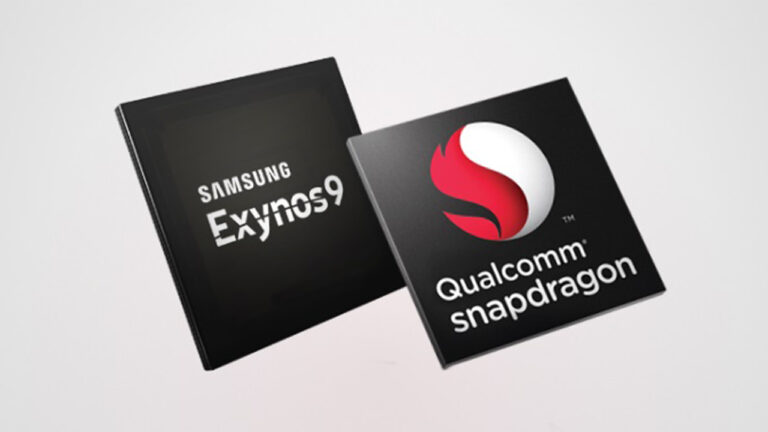The debate between Samsung’s Exynos and Qualcomm’s Snapdragon processors is more relevant than ever, especially as both brands push the boundaries of mobile technology. Depending on where you live, your Samsung Galaxy device might come equipped with one or the other, each with its own unique advantages. This blog dives into the latest performance comparisons, recent advancements, and exciting future updates for Exynos and Snapdragon processors, helping you understand which one may be better suited to your needs.
Exynos vs. Snapdragon: A Quick Overview
- Exynos: Samsung’s in-house Exynos processors power Galaxy devices primarily in Europe and Asia. Known for efficiency, Exynos processors emphasize battery management, strong multitasking, and enhanced AI capabilities.
- Snapdragon: Qualcomm’s Snapdragon processors power many U.S.-based Galaxy devices, celebrated for high-performance gaming, seamless connectivity, and powerful AI-driven features.
- Key Differences: Both processors have unique architectures, with differences in graphics processing units (GPUs), power management, and network compatibility, which leads to variations in performance.
Performance Comparison: CPU and GPU Power
- CPU Power: Snapdragon processors often lead in raw CPU performance, giving them an edge in handling high-demand applications and multitasking. Exynos processors, while slightly behind, are improving with each generation to close the gap.
- GPU and Gaming Performance: Snapdragon remains a preferred choice for gamers due to its Adreno GPUs, delivering smoother graphics, faster frame rates, and optimized gaming experiences. Exynos, with each iteration, is enhancing its GPU performance, especially in Samsung’s high-end models.
- Daily Efficiency: Exynos is designed for efficiency, making it a good choice for users who prioritize battery life over intense gaming. Snapdragon, however, balances high performance and efficiency for versatile usage.
Advanced AI and Machine Learning: The Next Frontier
- Exynos AI Capabilities: Samsung has significantly invested in AI for Exynos, enabling features like intelligent photo processing, predictive text, and real-time language translation. The upcoming Exynos 2400 is expected to further enhance these capabilities, possibly integrating advanced machine learning for smarter app suggestions and contextual awareness.
- Snapdragon’s AI Engine: Qualcomm’s AI Engine powers a range of AI-driven features, such as object recognition in photos, adaptive battery management, and real-time translation. With Snapdragon 8 Gen 3, Qualcomm is likely to introduce even more sophisticated AI capabilities that can handle real-time processing with less energy consumption.
- Who Leads in AI? Snapdragon currently holds a slight lead in AI-driven tasks, though Exynos is quickly catching up. Both processors are positioning themselves to handle future AI trends, including personalized user experiences and adaptive interfaces.
Battery Life and Power Efficiency
- Power Management: Snapdragon processors are known for superior battery management, efficiently balancing power with performance. This is crucial for users who need a device that can keep up with heavy use throughout the day.
- Battery Optimization in Exynos: Exynos processors prioritize efficient energy use during routine tasks, meaning they often excel in battery longevity during day-to-day activities like messaging, browsing, and social media.
- What to Expect in the Future: Both Snapdragon and Exynos are focused on enhancing battery efficiency with every generation. Snapdragon’s 8 Gen 3 is expected to set new standards in energy management, while Exynos 2400 will likely bring improvements that make it a strong contender in the efficiency department.
Photography and Imaging Capabilities
- Snapdragon Spectra ISP: Snapdragon’s Spectra ISP (Image Signal Processor) is renowned for its image processing, which improves color accuracy, detail in low light, and HDR. The upcoming Snapdragon 8 Gen 3 is expected to enhance computational photography, offering users high-quality photos with professional-level clarity.
- Exynos Imaging Technology: Samsung’s Exynos processors also boast strong imaging capabilities, with optimizations for Galaxy’s camera systems. Future Exynos models are likely to include enhanced ISPs to improve night mode, HDR, and AI-assisted camera features.
- Which is Better for Photography? Snapdragon currently has an advantage in image processing, but Exynos is not far behind, especially with Samsung’s software optimization. Future upgrades in both processors will only heighten mobile photography experiences.
Connectivity and 5G Advancements
- 5G Leadership: Snapdragon has led in adopting 5G, often offering faster speeds and more reliable connections, particularly in the U.S. The upcoming Snapdragon 8 Gen 3 aims to support 5G across wider bands and faster mmWave connectivity, making it a top choice for connectivity.
- Exynos 5G Advancements: Exynos processors also support 5G but are optimized for a broader range of LTE and 5G bands, making them versatile for global use. Future Exynos updates are expected to enhance 5G speed, reliability, and compatibility, especially in emerging markets.
- What’s Next for Connectivity? As 5G networks expand, both Exynos and Snapdragon will prioritize connectivity advancements. Snapdragon may hold an edge in high-speed 5G markets, but Exynos will likely continue focusing on broader compatibility.
What’s Next? The Future of Exynos and Snapdragon Processors
- Exynos 2400: Samsung’s Exynos 2400 is anticipated to close the performance gap with Snapdragon. It’s expected to bring significant advancements in GPU quality, battery efficiency, and AI-driven features, making it competitive in flagship devices.
- Snapdragon 8 Gen 3: Qualcomm’s Snapdragon 8 Gen 3 promises enhanced gaming, better AI processing, and advanced image quality. It’s expected to set new benchmarks in power efficiency and connectivity, solidifying Snapdragon’s place in high-performance mobile devices.
- Long-Term Trends: Both Exynos and Snapdragon are aligned with industry trends like 6G research, machine learning advancements, and improvements in augmented reality (AR) and virtual reality (VR) support. The processors of the future will be increasingly AI-driven, making them capable of adapting to user behavior, optimizing power use, and enabling seamless gaming and media experiences.
Key Takeaways: Choosing the Right Processor for Your Needs
- For High-Performance and Gaming Enthusiasts: Snapdragon remains the go-to choice, thanks to its superior GPU, advanced AI capabilities, and battery efficiency.
- For Everyday Efficiency and Battery Life: Exynos is a great option for users focused on daily tasks, battery life, and efficient multitasking.
- Future Compatibility: As both brands continue to improve their processors, future Samsung devices will bring high-performance capabilities, regardless of which chipset they use. The competition between Exynos and Snapdragon is ensuring both continue to evolve and push boundaries.
The Future of Exynos vs. Snapdragon
With each iteration, Exynos and Snapdragon processors bring increasingly powerful, efficient, and intelligent experiences to Samsung Galaxy users. Both invest in AI, connectivity, and battery management, set to transform mobile performance in the years to come. For gamers, photography enthusiasts, and power users, these advancements promise better devices for all types of users. As Samsung and Qualcomm continue to innovate, the next-generation Galaxy smartphones will be faster, smarter, and more energy-efficient than ever, making the future of mobile technology brighter.














+ There are no comments
Add yours